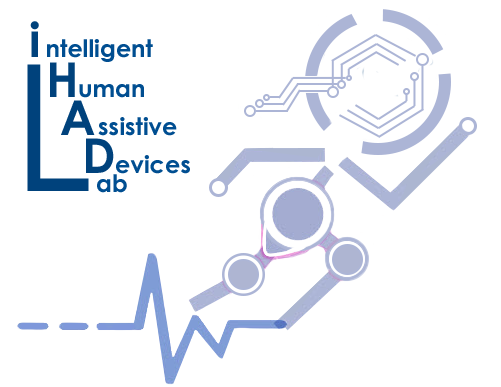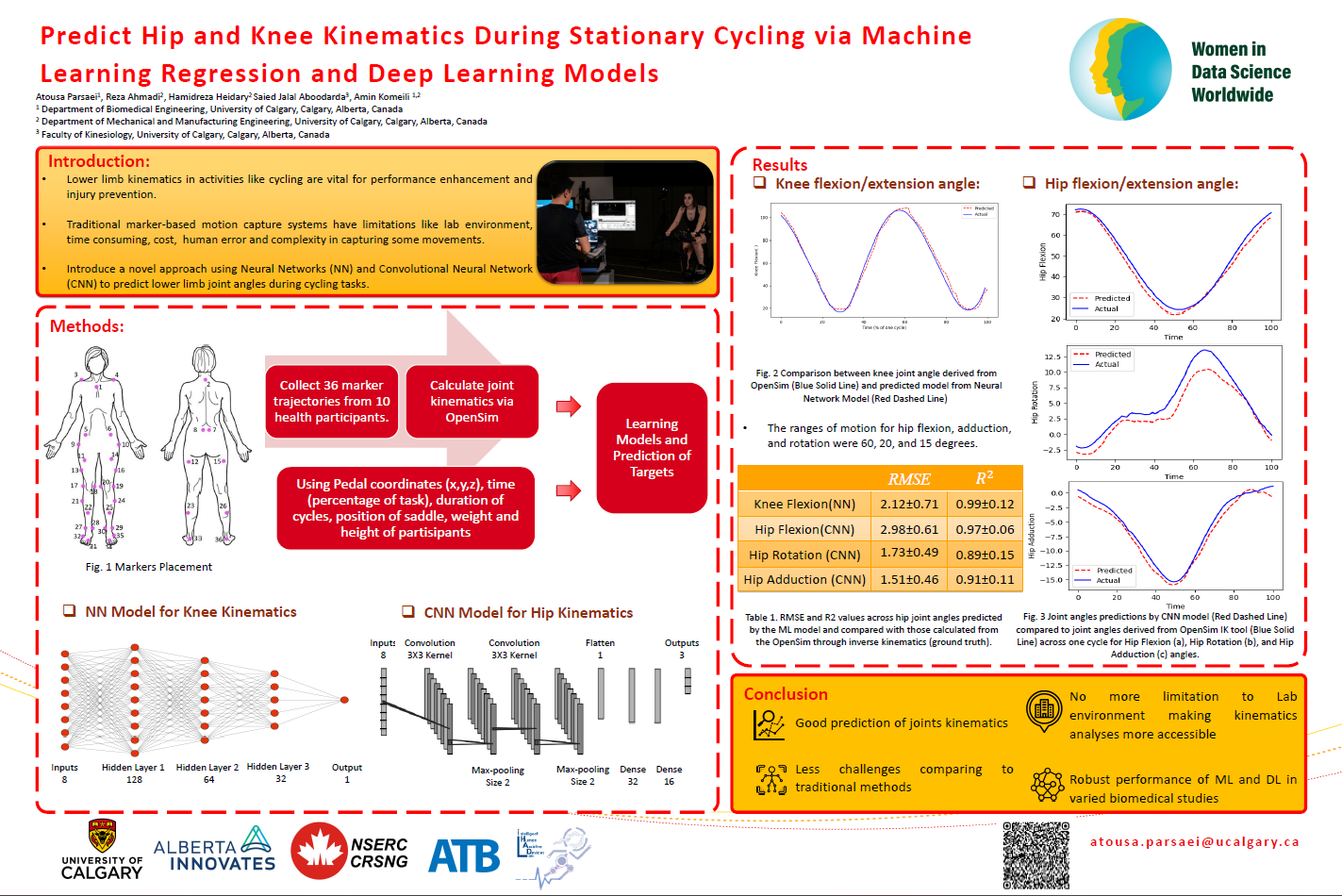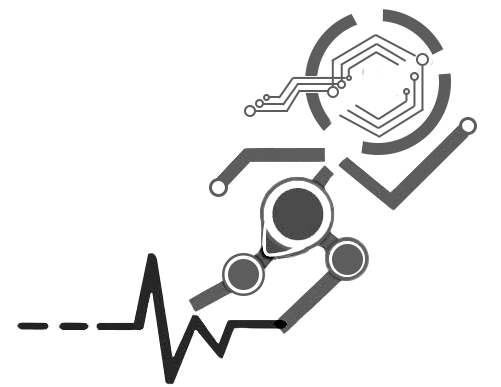To improve athletes’ performance and prevent injuries, an understanding of the kinematics of lower limbs is becoming increasingly important in rehabilitating lower extremities with cycling ergometer, particularly the hip and knee joints. Multiple methods are being used for capturing motion and simulating kinematics of motion. Motion capture system is a common method for motion studies, which includes placement of reflective markers on the lower limbs (at about 36 locations), as well as the use of cameras to track the trajectory of markers. However, these methods require complex and expensive equipment, which is limited to the laboratory environment, might face some difficulties in finding some hidden trajectories, and are typically expensive and time-consuming.
The purpose of this study is to integrate machine learning and deep learning methods with data from a motion capture system to develop a model that can predict where markers will be placed on the hips and knees on the basis of an individual’s anthropometric information and the cycling device dimensions.
To address this objective, this study leveraged a Convolutional Neural Networks (CNNs) model and Neural Network (NN) regression model to predict the hip and knee joint kinematics during pedaling task on a stationary cycling ergometer. The present study involved 10 participants, comprising eight males and two females, devoid of musculoskeletal disorders, to ensure the purity and relevance of the data. The CNN model, designed with five hidden layers, was meticulously trained on this dataset. And three hidden layers were created for the NN model. Our results showed a notable accuracy in predicting hip joint kinematics parameters using CNN, with a Root Mean Square Error (RMSE) of 2.98±0.61° for hip flexion, 1.51±0.46° for hip adduction, and 1.73±0.49° for hip rotation. In addition, the R2 for the knee was 0.99±0.12 and the RMSE was 2.12±0.71. This research tried to underscore the efficacy of machine learning and deep learning in biomechanical applications, particularly for healthcare and sports applications.
This study contributes significantly to biomechanical study of hip and knee joint, offering a potential integration of predictive models and real-time monitoring of hip and knee joint kinematics during cycling exercise with stationary ergometers. This technology has the potential to be employed in studies where motion capture lab is not available. Moreover, there are several advantages to this method, including the possibility of expanding it to studies of other parts of the body, and saving time and costs in comparison to capture motion systems. Improving and optimizing the proposed method will pave the road for developing efficient and cost-effective methods for conducting kinematics analyses.




